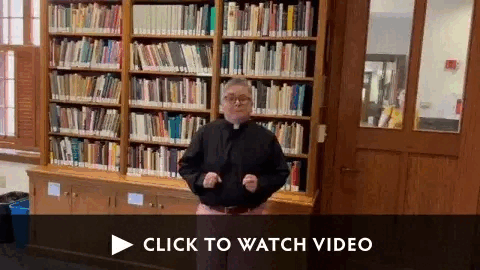Sulking Doggo
Greta has been sulking today. She saw my travel pack emerge from the closet shelf and knows what that means: mom is going away.
On Friday morning, I will leave for an 11-day trip to England to make plans for a parish pilgrimage sometime in 2024 — and as a pilgrimage and time of renewal for myself.
Pilgrimage is not tourism. Tourism involves a change in where we are, a change in our experiences, but it doesn’t necessarily involve a change in us. Pilgrimage is a way of opening ourselves to God in order to be changed, restored, reconciled, and empowered for our vocations. Fr. Richard Rohr writes,
If no interior journey has happened, we really haven’t made a pilgrimage….we’ve just been tourists. We’ve traveled around and said, ‘I saw this, and I saw that, and I bought this,’ and so forth. But that’s what a tourist does, not a pilgrim. And God has called us on pilgrimage. Above all else, pilgrimage is praying with your body, and it’s praying with your feet. It’s an exterior prayer, and the exterior prayer keeps calling you into the interior prayer.
I hope that you will begin praying about whether God might be calling you on this pilgrimage next year, to learn and to be changed by God in the places where great deeds of faith have been done and where God is worshipped in powerful ways.
I also hope that you will send me your prayer requests. If you email me by Monday (sladek@trinityprinceton.org) with the subject line ‘Prayer Request,’ I will offer your prayers at the site of St. Thomas Becket’s martyrdom at Canterbury Cathedral, where thousands upon thousands of prayers have been said over the centuries.
The Rev. Cn. Dr. Kara Slade, Associate Rector








